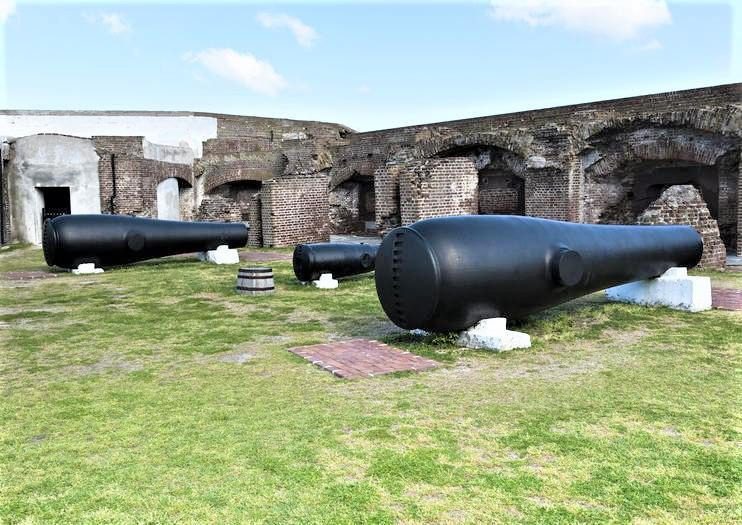Fort Sumter National Monument – is a landmark historic site in Charleston, South Carolina, that played a key role in the start of the American Civil War. It was here, early in the morning of April 12, 1861, that the first shots of the war rang out, when Confederate forces opened fire on the Union garrison occupying the fort. This attack marked the beginning of a four-year armed conflict that shaped the future of the United States.


Fort Sumter was built after the War of 1812 as part of the United States' coastal defense system. It was named after General Thomas Sumter, a hero of the American Revolutionary War. Construction began in 1829, and although the fort was not yet fully completed, its strategic location on a small artificial island in Charleston Harbor made it an important point in the conflict between North and South.
Before the Civil War began, the fort was controlled by a federal garrison under Major Robert Anderson. Following South Carolina's declaration of secession from the Union, Confederate forces demanded the surrender of the fort from the garrison. After several weeks of tense standoff, on April 12, 1861, Confederates launched a massive artillery bombardment that lasted 34 hours. As a result, the garrison was forced to surrender, and the fort came under Confederate control.
In the subsequent years of the Civil War, Fort Sumter was repeatedly attacked, especially by Union forces attempting to regain control over Charleston Harbor. In 1863, the Union army began a long siege of the fort, subjecting it to intensive shelling that seriously damaged its walls. Despite the destruction, the Confederates held the fort until February 1865, when they abandoned it following their retreat from Charleston.


Today, Fort Sumter National Monument is part of the U.S. National Park System and attracts thousands of visitors each year. Access to the fort is only by water — special tourist ferries depart from downtown Charleston. On the way to the fort, passengers can enjoy beautiful views of the harbor, where dolphins are often seen.
On the fort’s territory, preserved remains of defensive structures, cannons used during battles, as well as historical exhibits that help recreate the atmosphere of that time are available. The museum at the fort contains artifacts, documents, and interactive exhibits that tell about the causes, course, and consequences of the Civil War.
Included in the national monument is also Fort Moultrie, located on Sullivan’s Island. This fort played an important role even during the American War of Independence when American troops repelled a British naval attack in 1776. Fort Moultrie has a longer history than Fort Sumter and offers an opportunity to trace the evolution of defensive structures from the 18th to the 20th century.
In addition to historical exhibits, visitors can participate in guided tours led by reenactors in authentic military costumes. On certain days, artillery demonstrations are held, allowing visitors to see how 19th-century cannons worked.


The Significance of the Fort in U.S. History
Fort Sumter remains a symbol of the division that once separated the country, as well as a reminder of the importance of unity. For many Americans, this place is not only a memorial of the war but also a symbol of the trials the nation has endured.
Visiting the Fort Sumter National Monument is a unique opportunity to touch history and understand the complex events that shaped modern the United States. It is a place where the past comes alive amidst the scenic views of Charleston Harbor.



